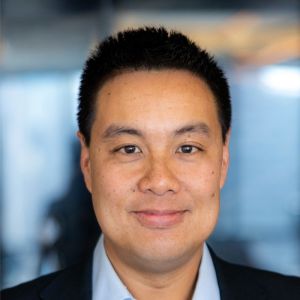Presented By: Future of Series presented by JPMorgan Chase
Public Private Collaboration Is Key to San Francisco’s Affordable Housing Growth
By Future of Series presented by JPMorgan Chase June 17, 2024 11:46 am
reprints
Justin Chen has been working on affordable housing solutions in San Francisco for various financing intermediaries, banks and foundations for almost 20 years. Eight months ago, he brought his expertise to JPMorgan Chase, where he now serves as an executive director in the firm’s Community Development Banking group. Partner Insights spoke with Chen about the challenges and successes he has experienced in the affordable housing space.

Commercial Observer: You’ve had a long career dealing with public-private partnerships and affordable housing. Tell us about some of your career milestones.
Justin Chen: The bulk of my career has been spent working with Community Development Financial Institutions (CDFIs), which are mission-driven lenders focused on creating economic opportunity in low-income communities. CDFIs use a combination of public and private capital to lend to borrowers that are often outside of the traditional financial system. They are often times the ones who take the risk at the front end of affordable housing projects, where a developer is trying to buy a piece of land and no one else is willing to lend them the money at that stage of the project. I was drawn to the CDFI field and affordable housing finance because of the unique ways they bring private capital to communities with people that are severely disadvantaged. As an Asian-American, I have experienced both the privileges and the discrimination that comes to people of my background, which has inspired me to work for the benefit of those who are the most vulnerable. It is so vital to ensure that everyone has a safe, affordable home to live in and opportunities to thrive. I’m glad that I get to play a small part in making this possible.
One of my earlier career experiences was working on the social investment team at a private foundation with about $3 billion in assets. The organization pioneered investing a private foundation’s endowment into communities, a pivot from putting it into the traditional highest-return investment. This focus resulted in $125 million of social investments being deployed in the form of debt and equity investments in low-income communities in addition to the foundation’s traditional grant-making efforts.
Before joining JPMorgan Chase, I was with the San Francisco Housing Accelerator Fund, an independent 501(c)(3) and CDFI. While I was in a private sector role, I worked closely with our public sector partners learning about the city’s housing priorities and how they made decisions and deployed capital.
What are some aspects of a public/private relationship that aren’t quite achieving their goals, and could be either fixed or replaced?
The public sector is very supportive of projects like Low-Income Housing Tax Credit (LIHTC) developments. When it comes to unconventional ideas about how to build affordable housing, there’s a lot of room for improvement. There are interesting ideas from the private sector regarding development and funding like preservation of existing housing stock that is already at affordable levels, or addressing the needs of more moderate- and middle-income residents who do not qualify for LIHTC developments. But having the public sector meet those needs takes a lot more legwork and can be really challenging.
Please share an example of a successful public/private partnership that resulted in a great affordable housing development.
JPMorgan Chase provided the construction and permanent financing for Tenderloin Neighborhood Development Corporation’s 4200 Geary, an affordable housing development in San Francisco’s Richmond District. The city provided rental operating subsidies for 50 units and $20 million in subsidy funding, which was essential in making this development possible.
4200 Geary will provide 98 affordable homes to seniors with low income in San Francisco, including veterans and seniors who were formerly homeless. We’re really proud to be part of this.
Tell us a bit more about JPMorgan Chase’s role in fighting the affordable housing crisis.
The success of our Community Development Banking group doesn’t happen alone. We work in partnership with our tax-oriented investment LIHTC equity partners. Also, as we grow our agency lending business, Fannie Mae and Freddie Mac have been critical partners and allow us to offer our clients multiple financing options. Our Historic Tax Credit business played an important role in some New York City Housing Authority rehabilitation deals we closed, and we hope to use this debt and equity combination with other housing authorities across the nation.
What do you hope that community development and affordable housing efforts in the San Francisco Bay Area will look like over the next five years?
Having more permanent sources of affordable housing funding from the public sector is critical. There’s a regional bond measure being considered right now in the Bay Area for this November along with continued efforts to permanently fund the state housing trust fund. Having these permanent sources will really help sustain affordable housing development to offset years where a budget deficit slows down affordable housing production.


